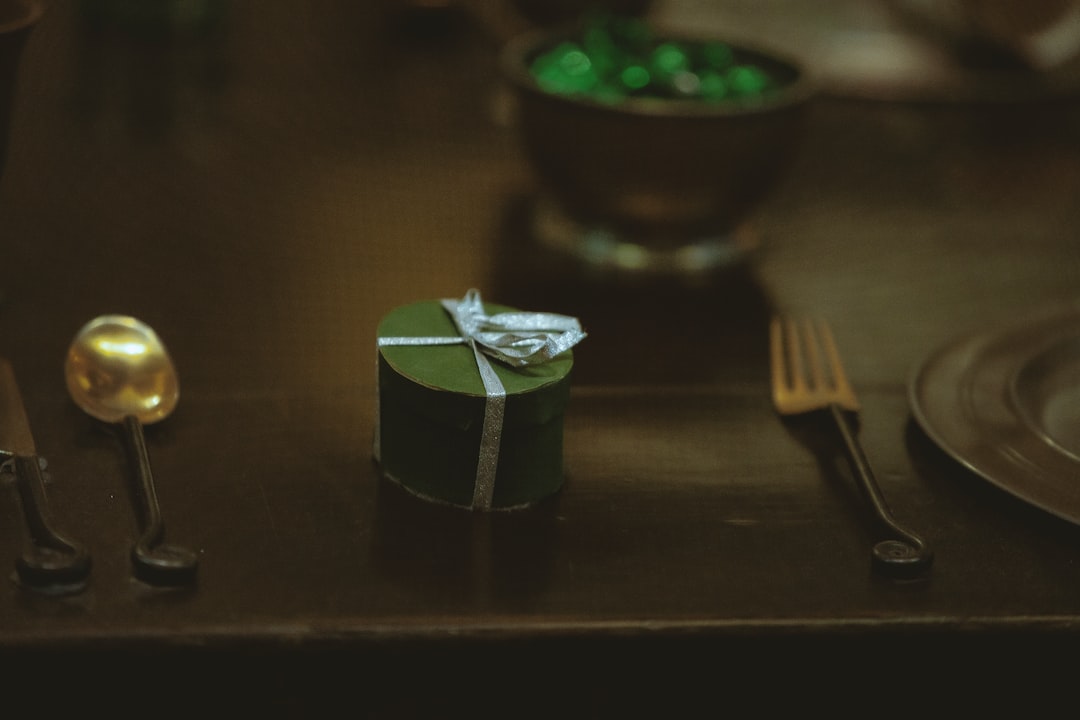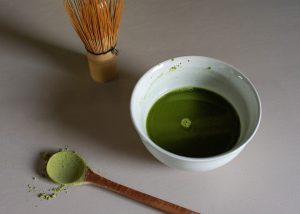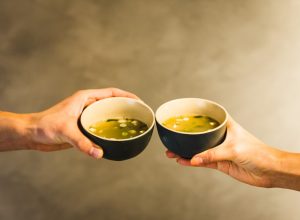The Elegant Essence of Japanese Matcha and Sencha
Discover the rich flavors of Japanese Matcha and Sencha. Dive into their history and benefits. Explore the green journey today!
The Origins of Matcha
Ancient Beginnings
The story of matcha begins in ancient China during the Tang Dynasty (618–907 AD). It was during this time that tea leaves were steamed and formed into bricks for easy transport and trade.
These bricks could be roasted and pulverized into a powder, which was then whisked with hot water to create a frothy beverage. This method of tea preparation laid the groundwork for what would eventually become matcha.
Introduction to Japan
Matcha’s journey to Japan is credited to the Zen Buddhist monk Eisai, who traveled to China in the late 12th century.
Upon his return, he introduced the powdered tea and its associated practices to Japan. Eisai’s influence was profound, as he not only brought back the tea itself but also the Zen philosophy that emphasized meditation and mindfulness, which became intertwined with the tea ceremony.
The Evolution of the Tea Ceremony
In Japan, matcha became an integral part of the traditional tea ceremony, known as “chanoyu” or “sado.” This ritualistic practice, which emphasizes harmony, respect, purity, and tranquility, evolved significantly during the Muromachi period (1336–1573).
The tea ceremony was refined and popularized by tea masters such as Sen no Rikyū, who is credited with perfecting the aesthetics and spiritual aspects of the ceremony.
Cultivation and Production
The cultivation of matcha involves a meticulous process that begins with shading the tea plants several weeks before harvest. This shading increases the chlorophyll content, giving matcha its vibrant green color and enhancing its flavor profile.
Once harvested, the leaves are steamed, dried, and ground into a fine powder using stone mills. This traditional method of production ensures the preservation of matcha’s unique taste and nutritional benefits.
Modern Appreciation
Today, matcha is celebrated worldwide for its rich history and health benefits.
It has transcended its origins as a ceremonial beverage and is now enjoyed in various forms, from lattes to desserts. The global appreciation of matcha continues to grow, inviting more people to explore its deep cultural roots and the serene journey it offers through each cup.
Health Benefits of Matcha
Rich in Antioxidants
Matcha is renowned for its high antioxidant content, particularly catechins, which are powerful compounds that help in neutralizing harmful free radicals in the body.
Among these catechins, EGCG (epigallocatechin gallate) is known for its cancer-fighting properties and its ability to boost metabolism. Regular consumption of matcha can contribute to reducing oxidative stress and promoting overall health.
Enhances Mental Alertness and Clarity
One of the most celebrated benefits of matcha is its ability to enhance mental clarity and alertness.
This is primarily due to the presence of L-theanine, an amino acid that promotes a state of relaxed alertness. L-theanine works synergistically with caffeine, providing a calm yet focused energy, without the jitters often associated with coffee.
This makes matcha an excellent choice for those seeking to improve concentration and cognitive function.
Supports Weight Loss
Matcha can be an effective aid in weight management. The catechins found in matcha help to boost metabolism and increase fat burning, particularly during exercise.
Studies have shown that consuming matcha before a workout can enhance the body’s ability to burn calories, making it a valuable addition to a weight loss regimen. Additionally, matcha can help regulate appetite, reducing the tendency to overeat.
Detoxifies the Body
Grown in the shade, matcha leaves accumulate high levels of chlorophyll, which is a natural detoxifier.
Chlorophyll helps in cleansing the body by removing heavy metals and chemical toxins. Drinking matcha regularly can support the body’s natural detoxification processes, contributing to improved health and vitality.
Boosts Immune System
The potent combination of antioxidants, vitamins, and minerals in matcha helps to strengthen the immune system.
Matcha contains vitamin C, selenium, chromium, zinc, and magnesium, which are essential for maintaining a healthy immune response. Regular consumption can help protect the body against infections and diseases, keeping you healthy and resilient.
Traditional Tea Ceremony Practices
The Essence of the Tea Ceremony
The traditional Japanese tea ceremony, known as “chanoyu” or “sado,” is a cultural practice that emphasizes harmony, respect, purity, and tranquility.
At its core, the ceremony is more than just the preparation and consumption of matcha; it is a spiritual and meditative experience that fosters a deep connection between the host and guests.
The ritualistic nature of the ceremony highlights the importance of mindfulness and presence in each moment. Every movement is deliberate and meaningful, reflecting centuries of tradition and cultural heritage.
Key Elements of the Ceremony
The tea ceremony is typically performed in a dedicated tea room, which is designed to create an atmosphere of peace and simplicity.
The room is often adorned with minimalistic decorations, such as a hanging scroll and a simple flower arrangement, known as “chabana.”
Essential tools used during the ceremony include the “chawan” (tea bowl), “chasen” (bamboo whisk), “chashaku” (tea scoop), and “natsume” (tea caddy). Each tool is carefully selected and maintained, reflecting the host’s attention to detail and respect for the tradition.
The Ritual of Preparing Matcha
The preparation of matcha is a central aspect of the tea ceremony.
The host begins by cleansing each utensil with precise movements, symbolizing purification and respect for the guests. Once the tools are prepared, the host measures the matcha powder using the chashaku and places it into the chawan.
Hot water is then added to the bowl, and the chasen is used to whisk the matcha into a frothy, smooth consistency.
The host presents the prepared matcha to the guests, who receive it with gratitude and partake in the shared experience of savoring the tea.
The Role of the Guests
Guests play an integral role in the tea ceremony, as their presence and participation are essential to the experience. They are expected to engage with the host and other guests respectfully, often exchanging polite conversation and expressing appreciation for the host’s efforts.
Guests are also encouraged to observe the aesthetics of the tea room and the utensils, as well as to reflect on the deeper meanings behind the ceremony.
This shared experience fosters a sense of community and connection, transcending the simple act of drinking tea.
Modern Uses of Matcha
Culinary Delights
Matcha has transcended its traditional use in tea ceremonies and found its way into a variety of culinary applications. Chefs and home cooks alike are incorporating matcha into both sweet and savory dishes.
From matcha-infused pastries and cakes to innovative sauces and dressings, this vibrant green powder adds a unique flavor and a pop of color to any dish.
In desserts, matcha is often used to balance sweetness with its slightly bitter, earthy notes. It is a popular ingredient in ice creams, macarons, and even chocolate, providing a sophisticated twist to classic treats.
For savory dishes, matcha can be used to season meats, enhance soups, or even be mixed into pasta dough for a visually striking and flavorful result.
Beverage Innovations
Beyond the traditional matcha tea, modern beverage culture has embraced matcha in a variety of innovative forms. Matcha lattes, both hot and iced, have become a staple in coffee shops worldwide, offering a creamy and energizing alternative to coffee.
The combination of matcha with milk or plant-based alternatives creates a smooth and comforting drink that appeals to a broad audience.
Additionally, matcha is being used in smoothies and health drinks, often paired with fruits and other superfoods to create nutrient-rich concoctions. Its natural caffeine content and antioxidant properties make it a popular choice for those seeking a healthy energy boost.
Matcha cocktails and mocktails are also gaining popularity, adding a unique twist to traditional recipes with their vibrant color and distinctive taste.
Health and Wellness
In the realm of health and wellness, matcha is celebrated for its numerous benefits. It is rich in antioxidants, particularly catechins, which are known for their ability to combat free radicals in the body.
This has led to matcha being used in various health supplements and wellness products.
Matcha’s calming effects, attributed to the amino acid L-theanine, make it a popular choice for those seeking to reduce stress and improve focus. It is often incorporated into mindfulness practices and yoga routines, where it is consumed to enhance relaxation and mental clarity.
The growing interest in natural and holistic health solutions continues to drive the popularity of matcha in wellness circles.
FAQ
Q1: Is it true that matcha and sencha require the same steeping temperature for optimal flavor?
A1: This is a common misconception. Matcha and sencha, while both derived from the Camellia sinensis plant, require different preparation methods and steeping temperatures to bring out their best flavors. Matcha, which is a finely ground powder, does not require steeping in the traditional sense but is whisked with hot water. The ideal water temperature for matcha is around 70-80°C (158-176°F) to preserve its delicate flavors and avoid bitterness. On the other hand, sencha, which consists of whole tea leaves, should be steeped at a slightly higher temperature, typically around 70-80°C (158-176°F) as well, but for a longer duration of about 1-2 minutes. Using water that is too hot for either tea can result in a bitter taste and may overpower the subtle, nuanced flavors that these teas are known for.
Q2: Are all matcha and sencha teas the same, or do they have different varietal traits?
A2: Matcha and sencha are not monolithic; they come in various grades and varietals that offer distinct flavor profiles and characteristics. Matcha, for example, is categorized into ceremonial and culinary grades. Ceremonial grade matcha is made from the youngest tea leaves and is prized for its smooth, sweet flavor and vibrant green color, making it ideal for traditional tea ceremonies. Culinary grade matcha, while still high quality, is slightly more robust and is often used in cooking and baking. Sencha also varies widely depending on factors such as the region of cultivation, the time of harvest, and the specific cultivar of the tea plant. Some sencha teas may have a more vegetal, grassy flavor, while others might exhibit a sweeter, more floral profile. Understanding these varietal traits can greatly enhance one’s appreciation of Japanese teas.
Q3: What is the best way to store matcha and sencha to maintain their freshness and flavor?
A3: Proper storage is crucial for maintaining the freshness and flavor of both matcha and sencha. Matcha is particularly sensitive to light, air, and moisture due to its powdered form. It should be stored in an airtight container, preferably in a cool, dark place such as a refrigerator, to prevent oxidation and preserve its vibrant color and flavor. It’s important to ensure that the container is tightly sealed to avoid moisture absorption and odor contamination. Sencha, while slightly more forgiving, also benefits from being stored in an airtight container away from light and moisture. Keeping sencha in a cool, dark place will help maintain its freshness. Both teas should be consumed relatively quickly after opening, ideally within a few months, to enjoy their optimal flavors.
Takeaway
Indulge your senses and elevate your tea experience. Dive into a world of exquisite flavors and aromas with our curated selection of premium teas. Explore a diverse range of tea varieties that will transport you to serene tea gardens and enchanting landscapes. Embrace the art of traditional brewing methods to savor each delicate note and nuance. Visit our online tea shop and embark on a journey of tranquility and refinement. Let every sip be a moment of pure bliss. Experience the essence of artisanal quality with every cup. Start your tea adventure today. As outlined in Reuters’ recent publication,
References
- A study published in the Journal of Chromatography A (2019) found matcha contains 137x more EGCG than standard green tea.
- According to the Ministry of Agriculture, Forestry and Fisheries of Japan, green tea exports reached a record high in 2022.
- Marukyu-Koyamaen is a leading Uji matcha producer supplying ceremonial-grade tea for over 300 years.
- Ippodo Tea Co., founded in Kyoto in 1717, is internationally recognized for high-quality matcha and traditional tea blends.







Comments